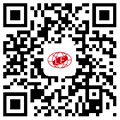Ensuring the accuracy and reliability of high-precision mirror axis detection results is a complex but crucial task that requires multiple approaches.
1�����、 Selection and maintenance of testing equipment
Firstly, high-precision and high-resolution detection equipment should be selected. For example, a coordinate measuring instrument can accurately measure the dimensional accuracy of the mirror axis, with an accuracy of up to the micrometer level. Atomic force microscopy is a good choice for detecting surface roughness, as it can provide nanoscale surface morphology information.

These devices require regular maintenance and calibration. Calibration is a key step in ensuring accuracy, and equipment should be regularly sent to professional institutions or calibrated using standard calibration blocks according to the manufacturer's recommendations. At the same time, the working environment of the equipment is also important. It is necessary to maintain a constant temperature, humidity, and clean environment to avoid the impact of temperature, humidity changes, and dust on the accuracy of the equipment.
2��、 Optimization and standardization of detection methods
The detection method should be scientific and reasonable. For dimensional accuracy testing, the method of taking the average of multiple measurements should be used to reduce measurement errors. When testing surface quality, appropriate sampling length and evaluation parameters should be selected. For example, for roughness detection, the sampling length should be determined based on the actual usage requirements of the mirror axis to accurately reflect the characteristics of surface micro roughness.
The testing process needs to be strictly standardized. Operators should receive professional training and be familiar with the testing process and standards. Before testing, the mirror axis should be cleaned to avoid interference from impurities on the testing results. At the same time, detailed records of testing data should be kept, including testing time, equipment number, testing location, and other information, to facilitate subsequent data traceability and analysis.
3�����、 Data Processing and Quality Control
The detected data needs to be processed scientifically. Use appropriate statistical methods to analyze the data, eliminate outliers, and obtain more accurate results through data fitting and other methods.
Establish a comprehensive quality control system. Compare the test results with the pre-set quality standards, and conduct a root cause analysis for products that do not meet the standards. The stability and reliability of the detection process can be evaluated through methods such as process capability analysis, and the detection process can be continuously optimized to ensure the accuracy and reliability of high-precision mirror axis detection results.








